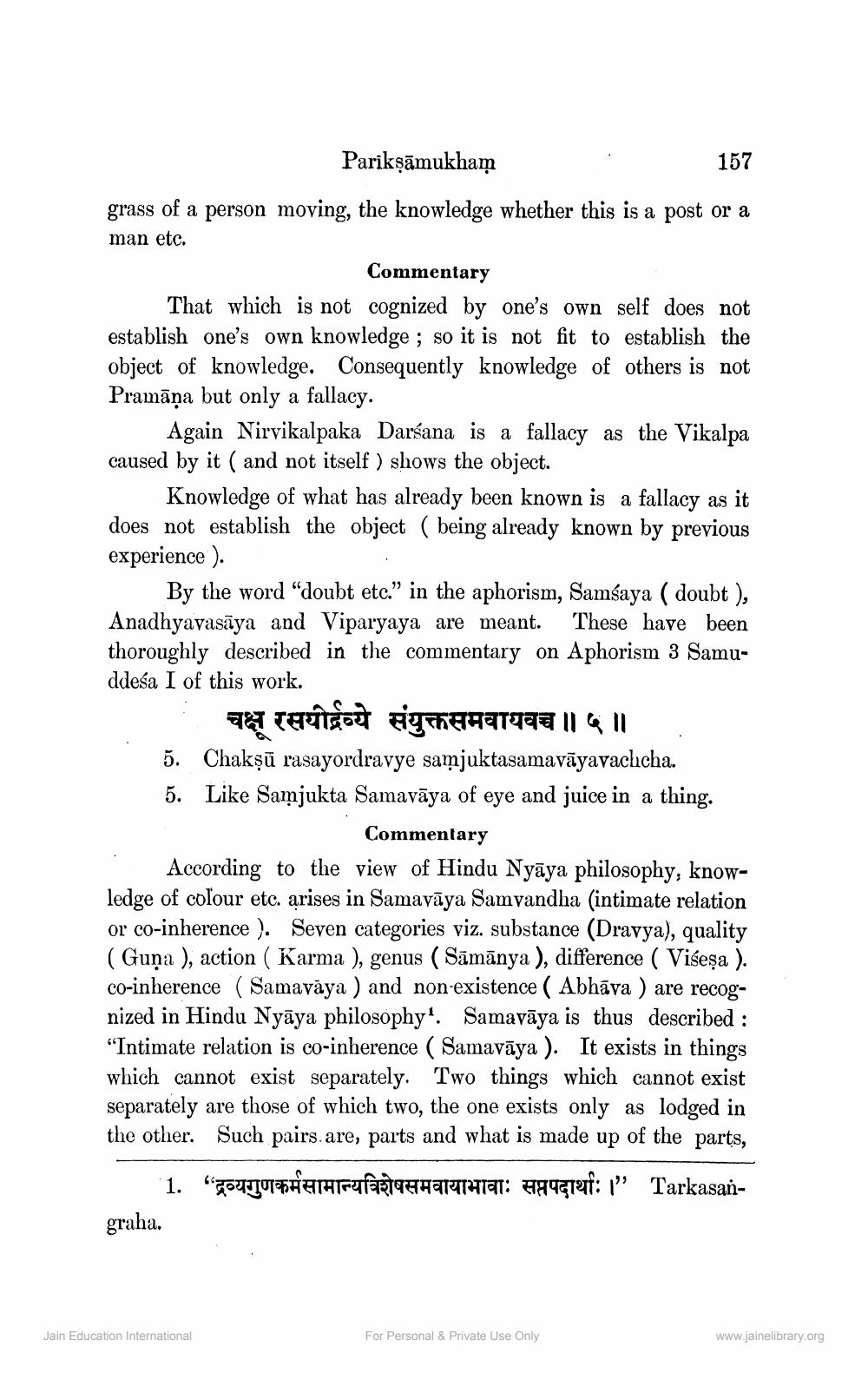________________
Parikṣāmukham
157
grass of a person moving, the knowledge whether this is a post or a
man etc.
Commentary
That which is not cognized by one's own self does not establish one's own knowledge; so it is not fit to establish the object of knowledge. Consequently knowledge of others is not Pramana but only a fallacy.
Again Nirvikalpaka Darśana is a fallacy as the Vikalpa caused by it (and not itself) shows the object.
Knowledge of what has already been known is a fallacy as it does not establish the object (being already known by previous experience).
By the word "doubt etc." in the aphorism, Samsaya (doubt), Anadhyavasaya and Viparyaya are meant. These have been thoroughly described in the commentary on Aphorism 3 Samuddeśa I of this work.
चक्षू रसीद्रव्ये संयुक्तसमवायवच्च ॥ ५ ॥
5. Chakṣu rasayordravye samjuktasamavāyavachcha.
5. Like Samjukta Samavaya of eye and juice in a thing.
Commentary
According to the view of Hindu Nyaya philosophy, knowledge of colour etc. arises in Samavaya Samvandha (intimate relation or co-inherence). Seven categories viz. substance (Dravya), quality (Guņa ), action ( Karma ), genus (Sāmānya), difference ( Viśeșa ). co-inherence (Samavaya) and non-existence ( Abhava) are recognized in Hindu Nyaya philosophy'. Samavaya is thus described: "Intimate relation is co-inherence (Samavaya). It exists in things which cannot exist separately. Two things which cannot exist separately are those of which two, the one exists only as lodged in the other. Such pairs are, parts and what is made up of the parts,
1. “ द्रव्यगुणकर्मसामान्यविशेषसमवायाभावाः सप्तपदार्थाः ।" Tarkasai
graha.
Jain Education International
For Personal & Private Use Only
www.jainelibrary.org




